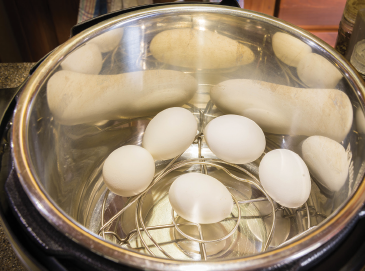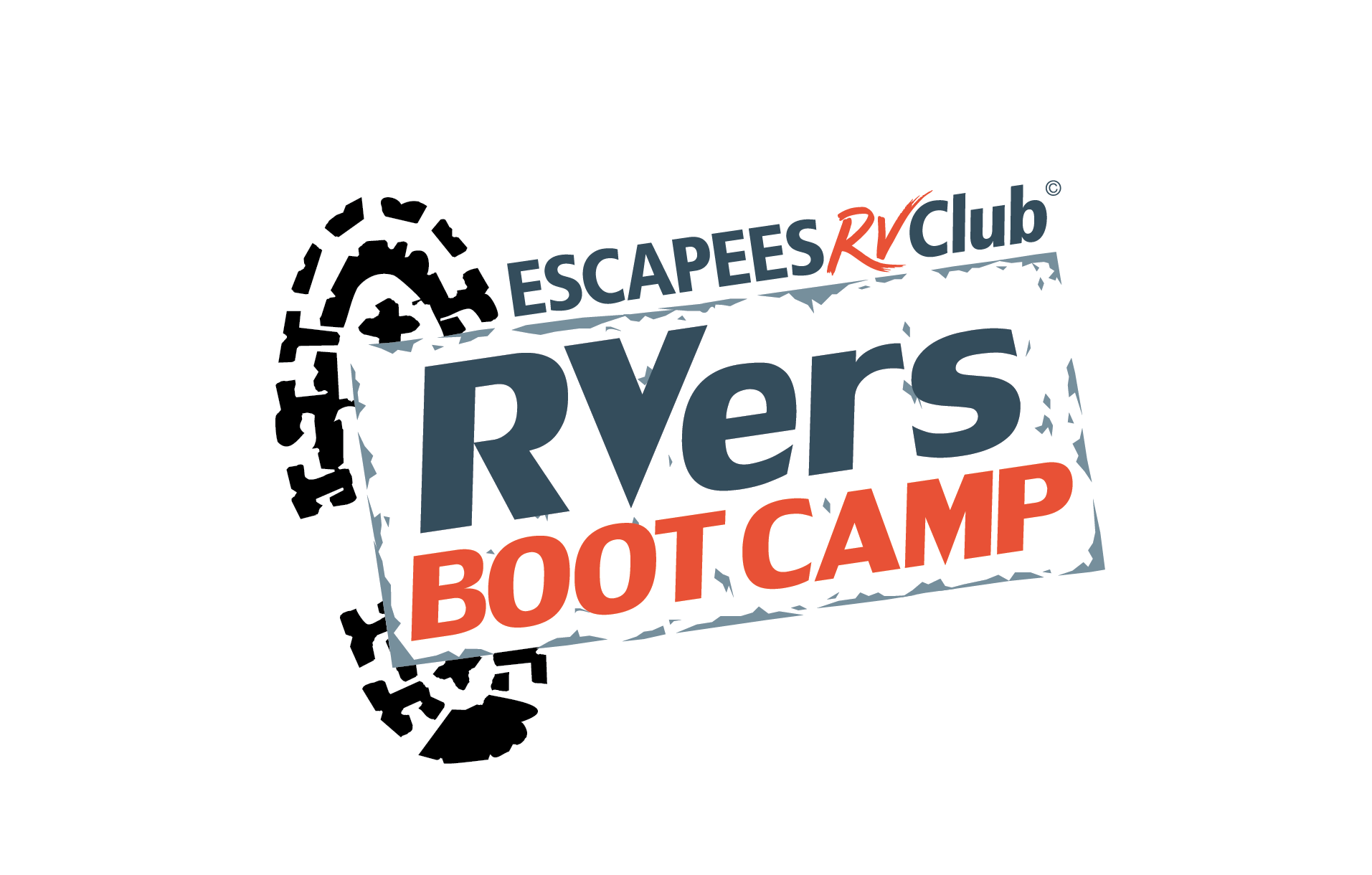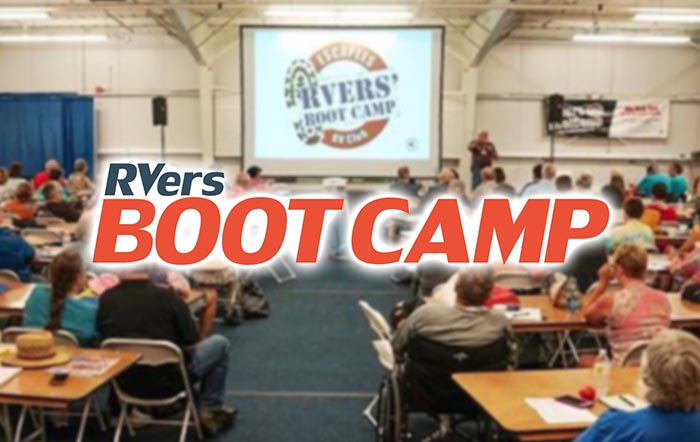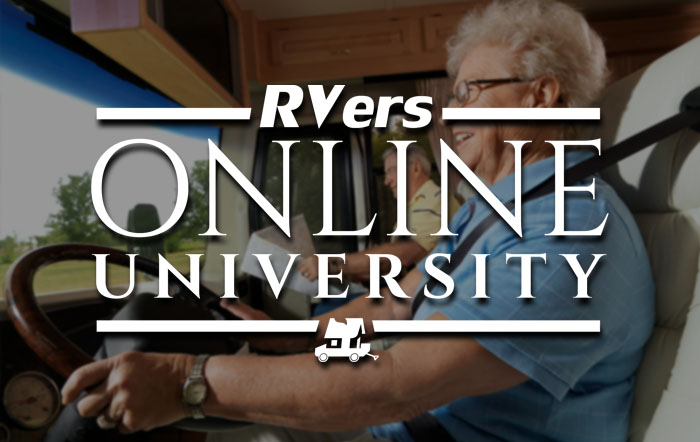By Bill McGrath #102931
A One-pot Wonder for the RV Kitchen
The RV lifestyle has many benefits that enhance our lives. We can travel to those distant places we longed for in our youth. We can see endless scenic wonders our country has to offer, often tucked away in remote corners. We can make new friends and share with them our life on the road. But, there are trade-offs, too.
One of the most acutely felt compromises is living space. We have fewer closets, fewer garages and fewer nooks and crannies in which to store our possessions. Nowhere is this more apparent than in the RV kitchen. We manage with small, even tiny, refrigerators. Storage space is at a premium, both for food and for labor-saving appliances. And oh, those anemic, teeny-weeny, three-burner stoves! It’s enough to give an avid cook a case of brick-and-mortar envy.
I’m the cook in our family, and I’ll be the first to admit that I’m a gadget guy. I’ve been at it since my college days when it was an economic necessity. Along the way, I’ve acquired nearly all the paraphernalia that you see on the cooking shows on TV. Everything from the German knife set to the industrial-strength food processor and stand mixer. I’m at the point where the “essential tools” section of a new cookbook doesn’t list anything I don’t already own. However, sometimes a new gadget comes along that mitigates our space-deprived suffering and opens the door to new culinary adventures.
The Problem
Suppose you need to sauté veggies, brown and braise stew meat until it’s like butter and keep it all warm until the guests arrive, or until you take it to the potluck dinner. That would normally require a skillet, a pressure cooker and a Dutch oven or Crock-Pot. Not to mention, you’ll have to wash all those items in that tiny sink! Luckily, modern technology has come to the rescue, courtesy of our Canadian friends to the north, the folks who first integrated many cooking techniques into one counter-top appliance.
The Solution
The solution is the Instant Pot™ (www.instantpot.com), a tool that takes up about the same amount of counter space as a Crock-Pot™, but does so much more. It takes the drudgery out of cooking multi-step recipes while saving energy and making cleanup a snap. And it’s perfect for the RV kitchen that is short on counter space.
Available in sizes ranging from a compact three-quart version up to a cavernous eight-quart behemoth, there’s one for every RVer’s need. Besides the Instant Pot brand, multi-cookers, as they’re generically known, are made by other companies, such as Breville and Fagor, and span quite a range of price. Basic models start around $50 US and go up to several hundred. They all share a basic set of features that make them the go-to cooking vessel in your kitchen, while higher-end units have more modes that allow one-touch cooking cycles.
I bought an Instant Pot Ultra with a six-quart capacity. The gadget guy in me had to have the model with the most options, but I only use a few of the features. I can sauté veggies or brown meat using one operating mode. I can pressure-cook meat, potatoes or squash in another mode, or I can slow-cook or warm other foods. On my unit, there is a setting for pressure cooking, steaming, making soups, stews, beans, chili, rice, eggs, porridge, cake and even a programmed mode for making yogurt. However, most of these choices boil down to presets, using one of several distinct operations: sauté, pressure cook, slow cook and maintain temperature.
This many presets might seem like over-kill, but the preset modes do have one advantage. You can program your own settings into each mode so that you won’t have to configure the pot the next time you make a given food. For example, you can have the “egg” mode set to pressure cook eggs for seven minutes at high pressure. You can then set the eggs on the steamer basket, toss in a cup or two of water, select “egg,” and press “start.”
When it beeps, at the end of the cycle, release the pressure and move the cooked eggs into cold water to stop the cooking. (The best part is that these are the easiest peeling eggs you’ll ever cook.) The next time you want to hard-boil eggs, simply select “egg” mode and press the “start” button.
You can preset all the other modes so that you get repeatable results when needed. Let’s configure the pot for another dish using the “ultra” or “maintain temperature” mode.
Suppose you’d like to cook a medium-rare steak, meaning the steak needs to reach an internal temperature of 130ºF (54ºC). Simply put the steak into a zip-lock bag, remove all the air from the bag, and insert it into the Instant Pot filled with water heated to the desired temperature. It will cook to the degree of doneness you want, and it won’t ever overcook, no matter how long it sits there.
You can then remove the steak, pat it dry, flash it on a hot grill for a crispy sear and voila—a perfectly cooked piece of meat every time. The meat will be medium-rare from edge to edge, without that overcooked band typically produced by cooking it only on the grill.
The Instant Pot lets you do this easily, and you can cook several steaks at the same time, tossing them onto the grill a minute before you’re ready to serve. This technique, known as sous vide, has become a popular way to get consistently cooked food and has been in wide usage in fancy restaurants for some time.
Suppose you wanted to make a rich beef stew without cooking it for hours. Enter the Instant Pot again. Brown the carrots and onions using the sauté mode, and set them aside. Then sear the beef cubes, again using the sauté mode. When the beef has browned, add back the veggies, pour in a couple of quarts of beef stock, toss in the cubed potatoes and a bay leaf or two, put on the lid, and set it to pressure cook for 40 minutes. Less than an hour later, you have a succulent stew with a rich flavor and meat that melts in your mouth. And the best part: only one pot to clean. (You can find one of my favorite recipes for the Instant Pot at www.seriouseats.com, and then search for “pressure cooker American beef stew.”
If you need to delay the start of cooking, you can program the delay time into the mode you’re using. Be careful with this as some foods, such as raw meat, shouldn’t sit around at room temperature for hours. You can also program the pot to keep things warm after the cooking cycle is complete. It’s a great defroster of frozen items as well. I have not tried the cake mode, but I bought a seven-inch springform pan to make a small cheesecake. It will also do a quick job of baking custards like crème brûlée.
Foods that cook quickly should probably not be prepared in a multi-cooker. The broccoli I cooked turned to mush after only one minute of pressure-cooking time. However, rice came out perfectly the first time. I keep a spreadsheet of cooking times for various recipes I’ve tried so that I can eliminate guesswork on subsequent attempts. There have been few, if any, complete disasters.
Cookbooks
There are numerous cookbooks devoted to multi-cookers, making the learning curve much flatter. Amazon has many available for purchase. The books fall into two general categories: those that are devoted to quick and easy recipes, and those that focus on dishes that can be made better rather than quicker. As a retiree, I have time on my hands, so I am more inclined toward the latter. One of my favorite Instant Pot cookbooks is by Melissa Clark, a food writer for the New York Times, titled, Dinner in an Instant, although most of her recipes aren’t primarily quick and easy.
We RVers must make the best of our small living and cooking spaces. A multi-cooker is a dream come true for both the avid cook and one who is looking to streamline and simplify the daily chore of preparing dinner. The results I’ve gotten so far have been stellar, and the time saved has allowed me to pursue my other gadget-intensive hobbies such as photography. Bon Appétit!
Bill McGrath and his partner, Anna Johnston, have been full-time RVers since 2009, volunteering with animal rescue organizations as they travel. They are members of Park Sierra SKP Co-Op and are on the waiting list at Evergreen COHO Escapees park. Bill considers himself an avid cook and gadget freak, and he writes about and tests equipment for AmazingRibs.com, a barbecue- and food-oriented website.














